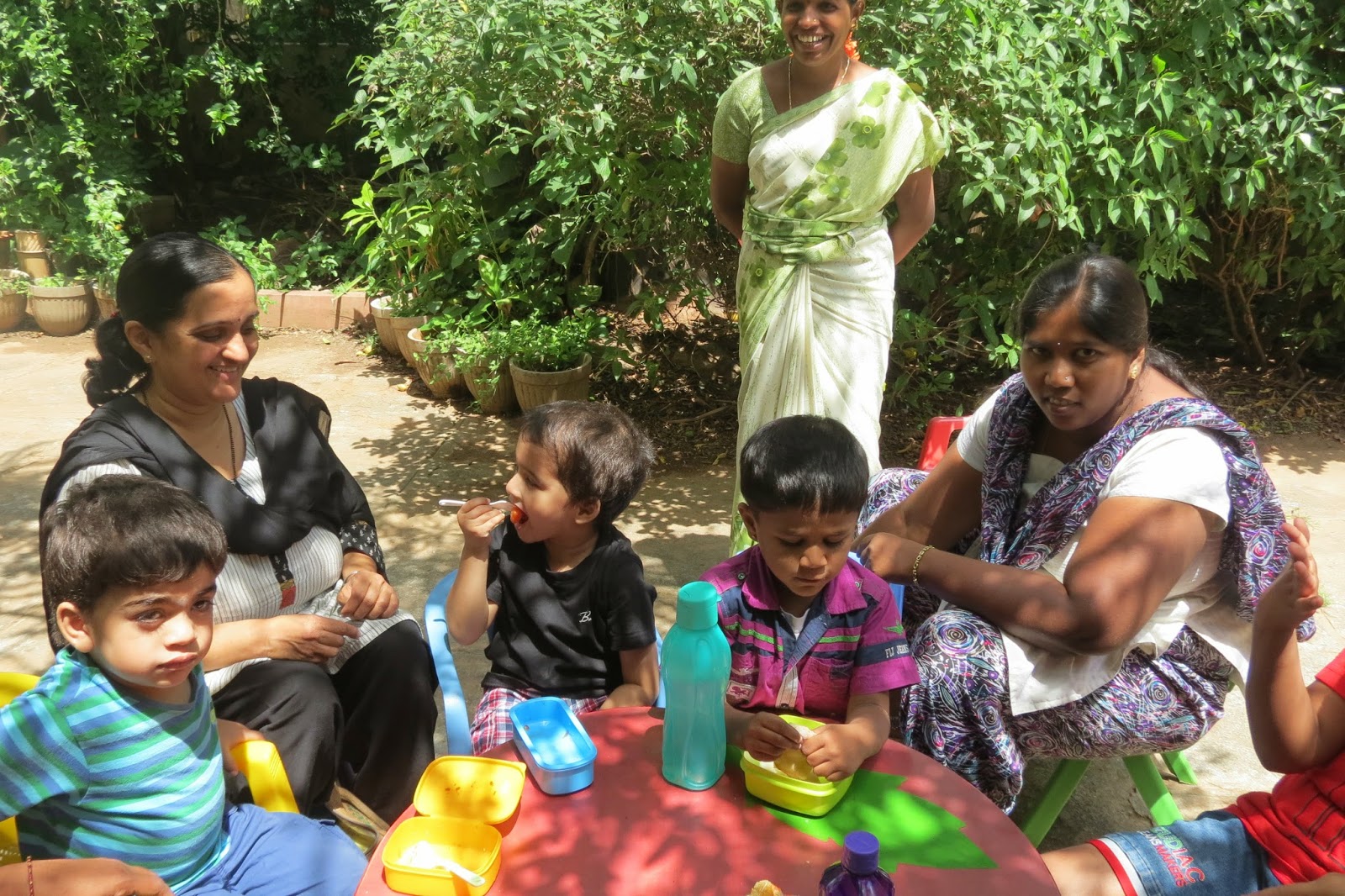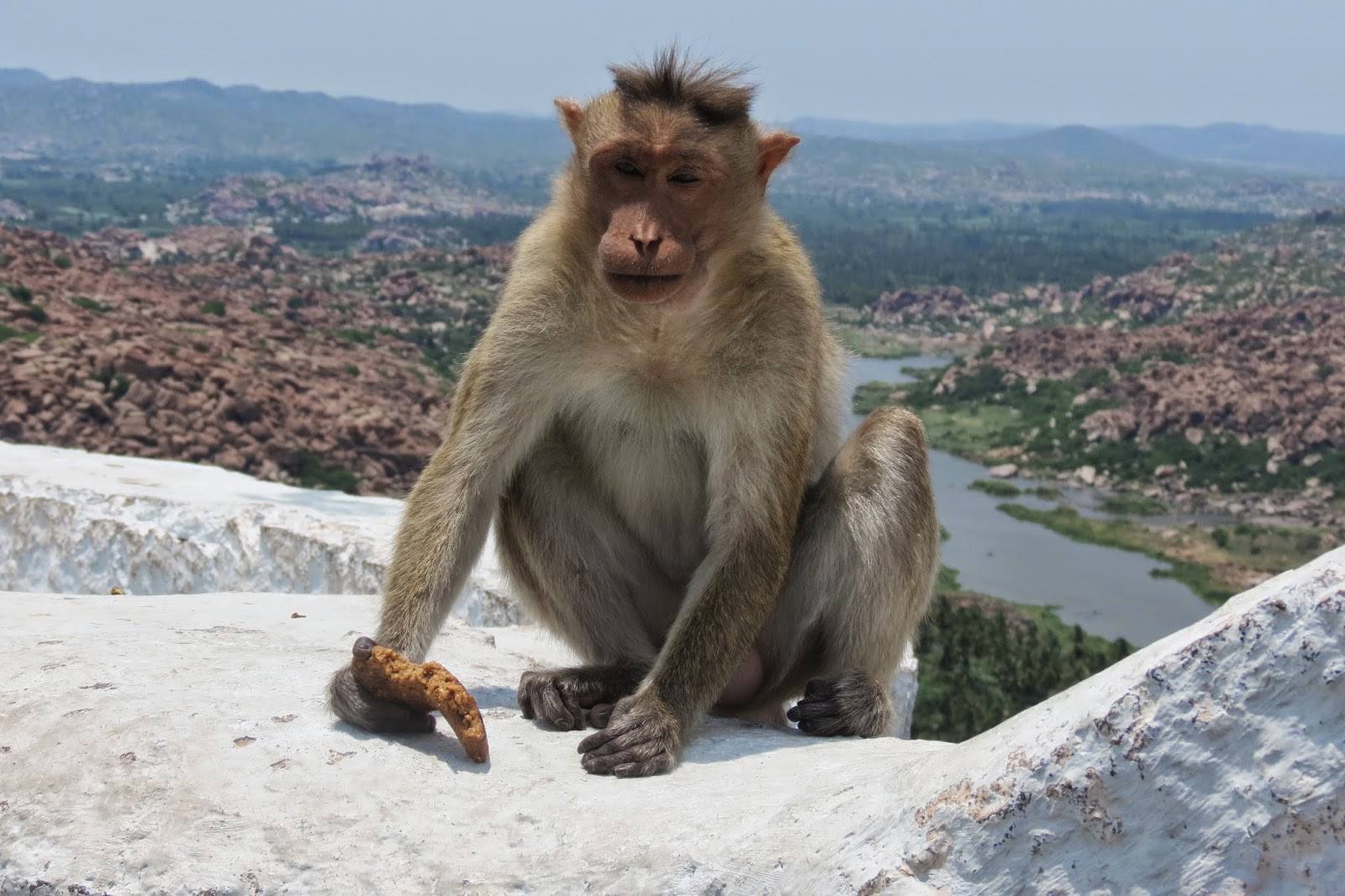Tamahar Trust, located in Bangalore, India, is a center that caters to children with special needs.
Resources
Offered
The following provide an overview of what the center
offers for children that attend the program:
1. Morning Program
(also referred to as the Preschool) (2.5 hours)
a. The
morning program consists of an hour long, one-on-one session with a teacher,
intern, or mother, followed by snack time and weekly based activities (i.e
yoga, music, dance, art, etc.)
2. Full Time Program
(also referred to as school) (5 hours)
a. The
school-based program caters to young adolescents to improve their reading,
writing and math skills, while aiming to improve their social and communicative
skills both inside and outside of the classroom. Additional activities include
music, art, yoga, badminton, and horticulture.
3. Afternoon Program
(2.5 hours)
a. Similarly
structured to the preschool program, the afternoon session consists of
one-on-one sessions and provides for a more intimate setting with a smaller
group of children.
4.
Individual
Sessions (1 hour)
a.
Each child gets 60
minutes with an interventionist, once or twice a week depending on the child’s
needs. The parents can observe the sessions and are taught methods to use at
home in order to continue the program at their own family environment.
5.
Assessments
and Screening of Children
a. The
primary assessment tool utilized at this center is the Carolina Curriculum for Infants and Toddlers
with Special Needs, and for Pre-Schoolers with Special Needs.
b. Children that arrive at the center for the first time are observed
and assessed with the Carolina Curriculum over the course of 3-4 visits, where
they are then placed in an appropriate program based on their calculated developmental
age.
My Observations
and Experiences at Tamahar
Overall impressions
It was extremely helpful and
convenient that the center is in walking distance to the apartment. This not
only allowed me to save money on rickshaw rides, but it gave me the opportunity
to explore the shops and vendors on the neighboring streets by foot. The center is located in a quiet, residential
area which helped to create a friendly and calm atmosphere.
I was kindly welcomed by all of the staff at
my placement and thoroughly enjoyed working with the other Indian interns at
the job site. Due to the friendships I made with the local students who worked
at my center, I was able to explore the city of Bangalore more in depth and
expand my social horizons, which is an experience that I very much appreciated
throughout my stay.
A
Center Driven by Family Support
One aspect of the work
that I appreciated was the active role of the mothers working with the children
at the center. This is something that is fairly rare compared to the work
performed with children in the United States, so it was interesting to be able
to gain another perspective that Tamahar provided within the healing and
restorative process. Not only were the mothers acquiring interpersonal skills
and learning how to care for their child in a therapeutic, holistic and
intellectually stimulating way, but the children were nevertheless benefitting
from this interconnected process. Additionally, rather than giving sole
attention to their own son and/or daughter and creating a biased environment,
the mother’s were able to work with other children, regardless of whether that
child was dealing with a similar condition or a completely separate diagnosis. It was nice to see the amount of support that
continued throughout my time at the center, and to know that progress was also
being made once the child left the center and returned to their home environment.
 |
| Children and their mothers during the morning program |
Restoring
Health through Unconventional Means
I appreciate the center’s “holistic”
view of medicine, where various activities are incorporated such as art, music,
yoga, and dance. Through these alternative outlets, the children are able to make
personal gains and explore the self to obtain an overall heightened sense of
awareness, mobility and social interactive skills.
I was lucky enough to have
the opportunity to teach dance a few times during my internship, which was in
my opinion a few of the most rewarding moments throughout my internship. While
the sessions were divided into groups based on levels of mobility and
concentration, it was still extremely difficult to create a cohesive setting
because of the varying degree of limitations that existed. After working with
the younger kids who lacked the complete attention to carry out complicated (or
even simplistic) movements, I learned to keep them at their fullest energy as
well as fully engaged throughout every moment of the session.
.JPG) |
| Teaching a dance class for the school-based children |
Another group of children consisted
of those who had cerebral palsy or other physical limitations. Although some
may say that dance is too strenuous and intricate for this population, I believe
that this is the most poignant work that can be achieved throughout their time
at the center. By adapting the movement
to their personal abilities, the children were able to achieve a wide range of
motion even while remaining grounding in a chair the entire session. It truly
helped to demonstrate how even the smallest triumphs, even as simple as
stretching fingers, can serve as an impressive and booming milestone in a child’s
daily life.
 |
| A typical yoga class offered twice a week |
One activity that I did find to provide significant
improvements to all of the children was yoga. During this time, I was able to
provide direct assistance and work one-on-one with a child to help strengthen
their balance, flexibility, and coordination. The meditative qualities
integrated within the sessions also proved to be very effective, including the
use of sound vibrations near the child (produced by a mediation
bowl), breathing exercises, therapeutic sustained touch on the head, as well as
calming songs while lying down in a comfortable position.
Overcoming
Defeat
If you ever feel like
giving up, think again. These children may have numerous setbacks and have to
live day by day, hour by hour, and minute by minute, but they are some of the
most hard-working, persevering, and heartwarming kids I have ever met. While
filling in for a teacher in the classroom one morning, I was asked to work with
a girl around 9 years old who had been learning word and number associations,
as well as simple counting. Not only was this little girl unable to communicate
verbally, she was also suffering from severe physical debilitations. Bound in a
wheelchair, she was unable to move her arms, legs, and head more than a couple
of inches at a time. Furthermore, she had a circular strap tied around her
head, which connected to a long, thin tubular stick that jut out at her
forehead, resembling a unicorn horn. This contraption, I learned, was her
source of communication, and a way of generating responses in the classroom. Using
a whiteboard, I would draw various pictures and have her point (with the stick
on her forehead) to the word that I had just verbalized. This was also done
with numbers and words in a similar manner.You do not need language
to communicate and learn. You do not
need physical movement or motor skills to obtain educational growth and
success. All you need is patience, support and faith. So if you ever feel like
giving up, think again.
Unconditional
Love
The level of commitment
that I have observed at Tamahar is absolutely incredible, and I deeply applaud
both the teachers and parents for their 110% dedication each and every day.
Caring for a child with special needs is both mentally exhausting and
emotionally taxing, yet the mothers repeatedly come into the center each day
with a smile on their face, ready and excited to make advancements in their
child’s development. I am so fortunate to have had the opportunity to share these
daily experiences with everyone throughout my six weeks at the center and to take
away unique life lessons that cannot be purchased or exchanged.
 My last few days of
interning were not left with a pile of goodbyes, but rather the repetitive question
of, “when will you return?” I cannot answer that question yet, but I hope to
return someday, to give back more than I did during my initial visit. So for
now, it’s not a goodbye, but a see you later. Until next time, Tamahar.
My last few days of
interning were not left with a pile of goodbyes, but rather the repetitive question
of, “when will you return?” I cannot answer that question yet, but I hope to
return someday, to give back more than I did during my initial visit. So for
now, it’s not a goodbye, but a see you later. Until next time, Tamahar.
To learn more about Tamahar Trust, visit the center’s
website at www.tamahar.org and on facebook
at https://www.facebook.com/pages/Tamahar/122215191218709













.JPG)




.JPG)